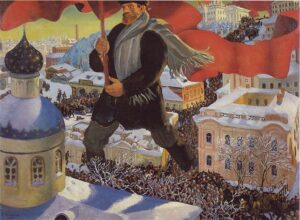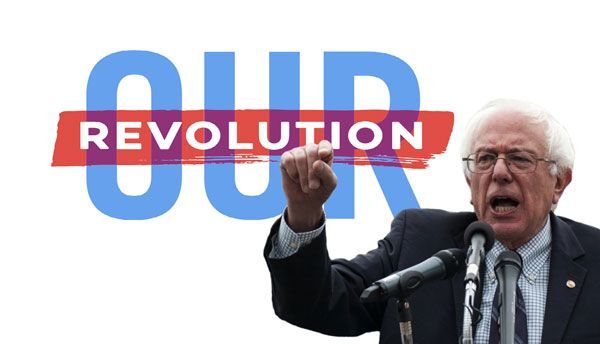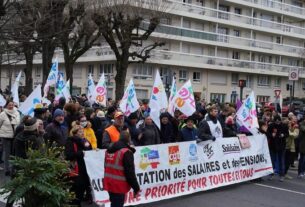 This is the eighth in our series on the events of 1917. Dates are given in the old style Julian calendar used in Russia at the time. This was 13 days earlier than the Gregorian calendar (adopted in Russia in 1918).
This is the eighth in our series on the events of 1917. Dates are given in the old style Julian calendar used in Russia at the time. This was 13 days earlier than the Gregorian calendar (adopted in Russia in 1918).
The working class and poor are on starvation rations. Grain prices rocket, provoking food riots. Scurvy and typhus are widespread. Furious at government inaction and increased state repression, peasants intensify land seizures. The Russian war front is collapsing. Exhausted, ill-equipped troops send delegations to the capital Petrograd to protest. Regiments resolve that, come winter, they will desert.
From the end of September, the Bolshevik Party has stepped up calls for the second All-Russia Congress of Soviets to be convened. The Soviet Central Executive Committee (CEC), still dominated by right-wing socialist Mensheviks and peasant-based Social Revolutionaries (SR), sets the date for 20 October – seeking all the while to postpone or cancel it. Piling on the pressure, the Bolsheviks organise a northern conference with delegates from the major cities, navy and army bases of Petrograd, Moscow, Kronstadt, Helsinki and Tallinn.
October
3-5: Intense discussions in the Bolshevik Party lead to a vote against participation in the Pre-Parliament (officially: the Council of the Russian Republic), set up in September by the coalition Provisional Government to try to halt the growing power of the soviets and Bolsheviks. The decision is a turning point, a step towards preparing the takeover of power. Debate has raged since mid-September, with Vladimir Lenin and Leon Trotsky repeatedly coming up against other prominent Bolsheviks.
7: The Pre-Parliament opens at the Mariinsky Palace. Trotsky is given ten minutes to explain the Bolsheviks’ position. He uses the platform to denounce the counter-revolutionary nature of the government and calls for all power to the soviets. The Bolsheviks go into overdrive campaigning across Russia and on every war front. Lenin returns to Petrograd under cover.
9: A Menshevik/SR resolution to create a defence committee is passed at the Petrograd Soviet executive. Their aim is to continue the imperialist world war, including a new offensive, and to transfer Bolshevised troops out of the capital. To their surprise, the Bolsheviks accept the proposal, realising that it could instead play an important role in defence of the revolution. It eventually starts work on 20 October, renamed the Military Revolutionary Committee (MRC) – with Trotsky as its president!
10: The Bolshevik Central Committee (CC) meets in secret for ten hours. It agrees a resolution moved by Lenin – ten votes to two (Grigory Zinoviev and Lev Kamenev) – stating that armed insurrection is pending and that the Bolsheviks must prepare for it. This opens up another period of intense debate in the party.
13: Warship radios broadcast the call for the All-Russia Congress of Soviets to go ahead. It becomes a nationwide issue for political parties and is key to the Bolsheviks winning over the majority of the soviets to their position, sometimes backed by Left SRs. The Petrograd Soldiers’ Soviet votes to obey only orders from the Soviet defence committee.
15: The Kyiv (Kiev) Soviet recognises the All-Russia Congress as the only power, by 159 votes to 28 with three abstentions. The following day, the northwest soviets at Minsk back the congress.
16: The Bolsheviks hold another meeting, including delegates from the party’s Petrograd executive and military organisation, its group in the Petrograd Soviet, from trade unions and factory committees. Although it leaves some room for ambiguity, it essentially unifies Lenin’s urgent call for insurrection with that of Trotsky and others for it to take place on the eve of the All-Russia Congress. One problem remains: when will the Congress take place?
17: The Menshevik/SR-led CEC postpones the Congress to the 25th.
17-22: An all-Russia conference of Factory and Shop Committees meets in Petrograd and calls for all power to the soviets.
18: Kamenev, backed by Zinoviev, leaks the Bolsheviks’ plans in an article in Novaya Zhizn (New Life – Maxim Gorky’s paper). Kamenev writes that he and Zinoviev oppose an armed insurrection. It is a blatant attempt at sabotage and a complete break of party discipline. The Petrograd Garrisons conference resolves to obey only defence committee orders.
19: The Urals Soviet, meeting at Krestinsky and representing 224,000 workers and soldiers – 80 of the 110 delegates are Bolsheviks – demands the All-Russia Congress is convened immediately.
20: Provincial soviets at Ivanovo-Voznesensk declare that they are “in a state of open and ruthless struggle with the Provisional Government”, with only one vote against.
22: Hundreds of thousands of people answer the MRC’s call to attend mass meetings and peaceful protests in Petrograd. It is a huge show of strength for soviet power. Bolshevik papers list 56 mass organisations supporting the demand.
23: The Peter and Paul fortress backs the Bolshevik position after Trotsky addresses the garrison, as does the Kronverksky arsenal (100,000 rifles). Provisional Government troops attempt to shut down Bolshevik printing presses (Rabochii Put [Workers’ Path] and Soldat papers), and attack the HQs of the Bolshevik CC and MRC, both based at the Smolny Institute. The MRC starts appointing commissars to military units as representatives of soviet power. The Petrograd Soviet issues Revolutionary Decree No.1, taking control of employment.
24: Trotsky and the MRC coordinate the taking of Petrograd’s main bridges, roads and buildings by Red Guards and workers. The former minister-president, Alexander Kerensky, scuttles out of Petrograd with an official US car escort displaying the Stars and Stripes.
25/26: The capture of the Winter Palace housing the government completes the takeover of Petrograd. The MRC announces the successful revolutionary overthrow.
25: The second All-Russia Congress of Soviets begins with 650-670 voting delegates (and around 900 present), including 300 Bolsheviks plus fellow travellers, up to 190 SRs (split into two factions, with Left SRs the stronger), around 70 Mensheviks, and 30 Internationalists. At the first All-Russia Congress in June, the SRs and Mensheviks had 600 out of 830 delegates. The composition illustrates the shift as younger, more working-class delegates replace the middle-class intellectuals and officers who dominated in June. Over 500 back the seizure of power. It elects a new presidium of 14 Bolsheviks, seven SRs, three Mensheviks, and one from Gorky’s group. The Right SRs and Mensheviks walk out. A new CEC is elected – the groups that walked out are given the right to send delegates on a proportional representation basis.
26: The Soviet government is inaugurated with Lenin as chair of the Council of People’s Commissars. It issues decrees on ending the war, and on the land. Fighting erupts in Moscow and flares up over eight days as counter-revolutionary forces attack.
27: Soviet power is established in Minsk, Kronstadt, Ivanovo-Voznesenk, Lugansk, Kazan, Rostov-on-Don, Ekaterinburg, Tallinn, Samara and Saratov. Troops led by General Krasnov and Kerensky move on Petrograd.
29-31: Kerensky and Krasnov are defeated.
31: Soviet power is established in Baku, and runs 17 provincial capitals.
In the History of the Russian Revolution (1930) – by far the best analysis to date – Leon Trotsky explains that the workers, soldiers and poor peasants had no choice but revolution in October 1917. Economic collapse, social disintegration, grinding poverty and interminable war – and the betrayal of ‘liberal’ and right-wing socialist politicians – proved to the working class and oppressed that only a soviet government could take society forward. Many of the vital tasks, such as supplying water, food and fuel, were already being carried out by the soviets.
Trotsky wrote: “The government of the soviets… grew up irresistibly from below, from the breakdown of industry, the impotence of the possessors, the needs of the masses. The soviets had in actual fact become a government. For the workers, soldiers and peasants there remained no other road… It had to be realised”. Over the course of eight months, the Bolsheviks led by Lenin and Trotsky had become a mass revolutionary party which had won the support of millions. They had developed the program, strategy, tactics and organisation necessary to realise the revolution – and set up the world’s first workers’ state.




